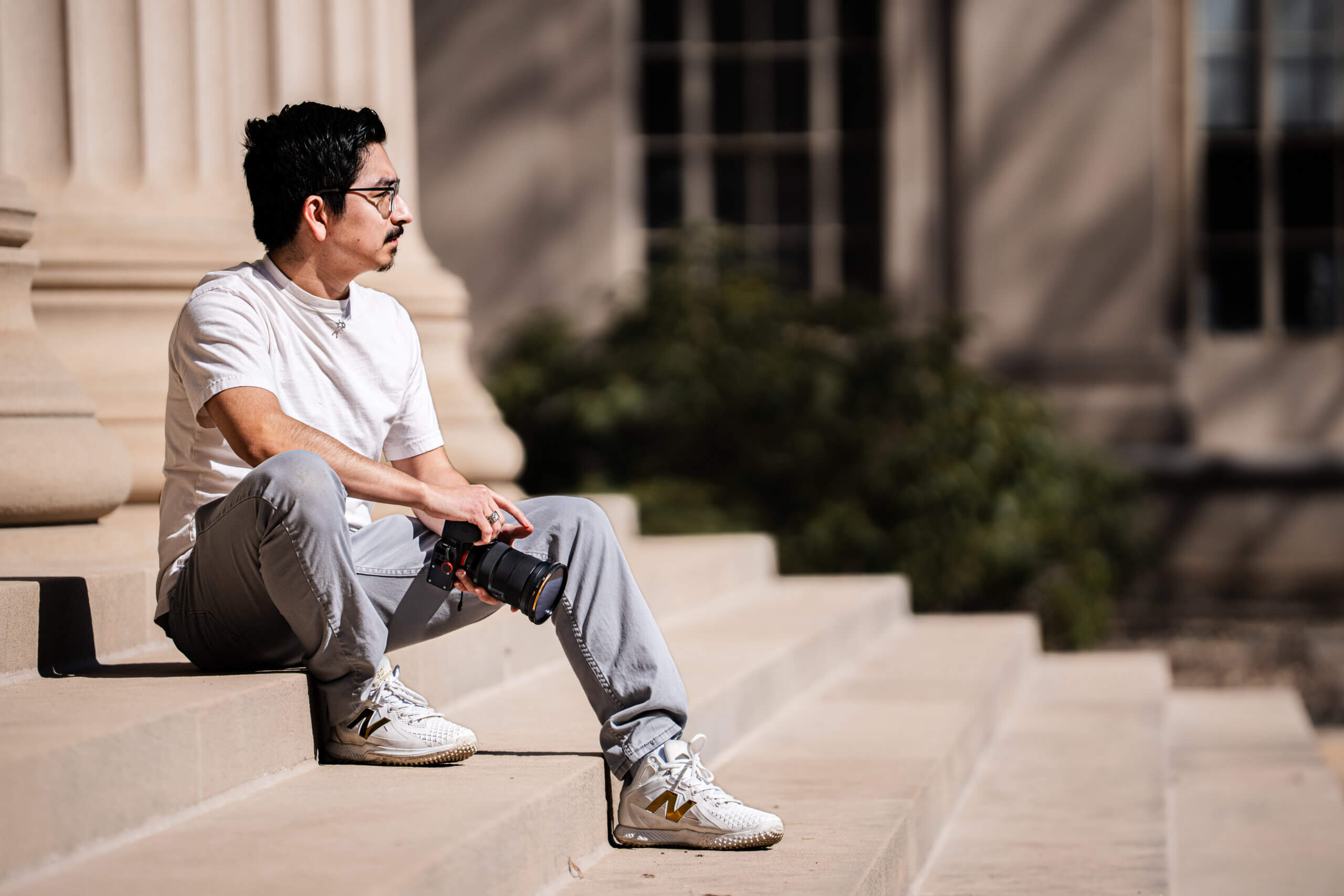Building bridges between science and the humanities
Senior Omar Orozco wants to use storytelling and the arts to help educate the next generation of computer scientists, mathematicians, and engineers.

Senior Omar Orozco wants to create lasting connections between the sciences and the humanities. A joint Course 21E major (Bachelor of Science in Humanities and Engineering), Orozco also wants to create pathways for students to be exposed to technical fields like computer science, engineering, and mathematics.
Through 21E, Orozco chose Comparative Media Studies/Writing and Computer Science and Engineering as his areas of focus. “These are exciting areas with potential for lots of growth,” he says. “So much of technical study is about explaining how things connect people and the world.”
Early exposure to CMS/W professor and Scheller Teacher Education Program director Eric Klopfer during Orozco’s first year at the Institute, along with opportunities to teach math, science, and humanities to students in Mexico through MISTI Global Teaching Labs, shaped his commitment to improving opportunities for first-generation, multilingual students like himself.
He says this first hand teaching experience inspired him to pursue an academic career and learn to teach computer science and related fields more effectively. “Showing students how big the world outside the classroom can be is exciting,” he says. “MISTI allowed me to connect with kids like me and show them what’s possible.”
A wealth of educational and extracurricular opportunities
A first-generation student from Los Angeles, California, Orozco shares close ties with his family and a deeply-held sense of responsibility for his siblings. “This unique blend of experiences – the community at MIT, travel, and exposure to all kinds of interesting people – has helped me better understand who I am and my role in my family,” he says.
Orozco showed an early interest in computers. His father owned a computer repair shop. “I was more passionate about computers than math,” he says. “My father helped me investigate how technology can work.”
When he arrived at MIT, Orozco chose, among other areas, to explore photography – and indulge a longstanding interest in the kinds of mythmaking and storytelling popular in the film industry. This, along with lifelong investments and interests in education, computers and computing, helped him select the Institute despite interest from and acceptance at several other schools.
Growing up in California and spending time in neighborhoods near Hollywood film studios fed his interest in photography. Before settling on MIT he considered attending film school. “I was drawn to photography, journalism, and general media studies because they can help us tell exciting stories about the world,” he says. An introductory photography course at MIT offered him practical experience and the kind of consistently valuable feedback that improved both his skills as a photographer and his performance as a student.
Orozco also credits QuestBridge – an organization that connects high-achieving students from low-income backgrounds with a thriving community and transformative educational, career, and life – with influencing his decision to attend MIT. “QuestBridge allowed me to apply to top colleges and universities for both early admission and a full, four-year scholarship,” he says. “Another reason I applied to MIT was because of the QuestBridge National College Match program.”
MISTI, Orozco notes, helped him reconnect with his Mexican roots and his family. “I got to see my great grandmother in Mexico right before she passed away,” he says, “during the time I spent teaching there.” CS Forward, part of the Scheller Teacher Education Program, further fed his interest in sharing his skills and abilities with others as an educator.
“It’s important to bring a spirit of discovery into the classroom and the tech sector as a student, teacher, and designer,” he continues. “We have to remain curious.”
Outside the classroom, Orozco makes himself available for a variety of volunteer opportunities and other activities. He’s currently co-president of MIT’s QuestBridge Scholars network chapter. The QuestBridge Scholars Network offers students activities, curriculum assistance, and mental health support.
He continues to sharpen his photo skills as The Tech’s photo editor. He is also a member of the First Generation Low Income (FLI) student club, and serves as editor of Technique, MIT’s student yearbook, as historian for the Latino Cultural Center, and as event chair for MIT’s Campus Preview Weekend. Outside of MIT, he also works closely with the Hispanic Scholarship Fund. “I want to give back and help others,” he says, “and take advantage of as many opportunities as I can while I’m here.”
Networking for impact
MIT’s status as a top-tier institution led Orozco to begin planning for what might be next almost as soon as he arrived on campus. He’s grateful for the MIT community. “I wouldn’t be as far along without other students’ and faculty members’ support,” he says. “Being at MIT has exposed me to top companies and contacts at those companies, something I recommend for other students and people interested in attending MIT.”
Orozco’s time at the Institute has led to what he describes as an exponential expansion of his worldview. “There are so many different people from everywhere with so many different skills and abilities,” he says. “It’s important to spend time among them and learn more about what motivates them.”
Next, Orozco wants to establish himself professionally, building relationships with experienced leaders in engineering and project management before potentially returning to school for graduate study. “I completed an internship at Toyota and learned quite a bit about project management,” he says. “Concision and clear messaging became important during presentations to multiple institutional stakeholders.” The value of educating a variety of audiences and ensuring they understand how to use what they’ve learned effectively is important, he believes.
MIT’s CMS/W and computer science programs helped Orozco earn some hard-won, valuable lessons about the importance of inviting all kinds of people into decision making, people with different kinds of experiences in the humanities and the sciences. Creating spaces where practitioners can live and work together, support one another, and share important ideas can mean better outcomes for everyone involved. “Let’s try to open these fields to all kinds of people,” he says, “and create a world in which this is how things work.”
No related posts found.
Share a Story
Do you have a story to share about an event, a publication, or someone in the community who deserves a spotlight? Reach out to the SHASS Communications Team with your idea.
Email SHASS Communications